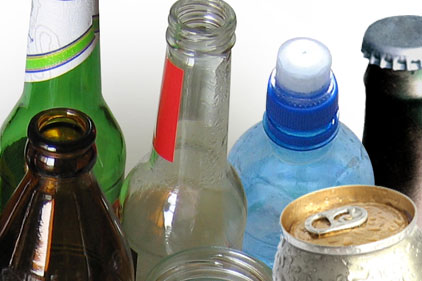Reportlinker.com (www.reportelinker.com) announces that a new market research report is available in its catalogue, “Beverage Packaging Market By Beverage Types (Non-Alcoholic, Alcoholic & Dairy), Packaging Types (Bottle, Can, Pouch, Carton, Draught, Bulk & Others), Material (Glass, Plastic, PET, HDPE, Metal, Paper-Board & Others) - Global Trends & Forecast To 2018.”
The beverage industry is one of the most important constituents of consumer packaged goods. As economic stability is restoring, the beverage industry is gaining its lost volume. The beverage packaging market is considered to be one of the most dynamic packaging markets with shifts in types of packaging and materials used varyingly across regions. This report estimates the market size of the global beverage and its packaging market in terms of revenue and volume of beverages packaged. Non-alcoholic beverage packaging dominates the market share in terms of value as well as in volume. In terms of geography, the report is segmented by Asia-Pacific, Europe, North America, and Rest of the World (ROW). The beverage packaging market is broadly divided on the basis of package type, such as bottle, can, pouch, cartons, and others. With a huge market potential and growing consumer preference, the market is likely to witness considerable growth in the coming years.
Beverage packaging is an important aspect of the beverage industry. Beverage packaging plays a vital role in protecting and extending a beverage's shelf life. Beverage packaging can be done using different raw materials and different pack types. Depending on the characteristics of the beverage intended to be packaged and value to be offered by packaging, the selection is done. Right packaging types is essential to preserve beverage taste and prevent untoward chemical reactions endangering the consumer's health. Hence, an efficient and suitable packaging is imperative for every beverage.
Major stakeholders of a beverage packaging market are the raw material suppliers, beverage producers, and packaging product producers. The key companies with substantial market share in beverage packaging industry are Ball corporation (U.S.), Crown Holdings Inc. (U.S.), Rexam Plc. (U.K.) and Tetra Laval (Switzerland). The key players of the industry held nearly one-fourth of the total beverage packaging market that depicts the participation of large number of players in this market. This fragmented industry structure is primarily due to the availability of number of pack types and raw materials used for packaging beverage.
Beverage Packaging Market
The figure above shows the growth trend from 2013 to 2018. Plastic has the highest growth rate and its market is entirely pushed by PET, market share of plastic is increasing for the period under consideration.Paper & board registers the highest growth, reaching $16.9 billion by 2018. Such shifts in preference for PET and HDPE over glass and metal, arises mainly from structural and cost advantages that plastics provide. Not only the cost of production, but also the cost of recycling plastics is cheaper as compared to other materials.
The saturated beverage market of the North America and Europe will result to slow growth of packaging market in the region. A slight boost in European market can be seen by the East European nations. Environmental awareness in consumers is also driving them to use environmentally friendly products and this is a reason that they are changing their preferences from glass to PET and HDPE.
Changing lifestyles and disposable incomes in APAC economies drives end-use market
APAC occupies the largest share in the beverage packaging market. However, developing economies such as China and Indiaare driving further growth in the region. Consumer trends, westernization of eating habits and increasing disposable incomes are some of the key factors that influence trends. Similarly, the flourishing food and beverage processing industry in Brazil and other Latin American countries drives the growth in ROW.
Most of the countries in Asia-Pacific are still at a developing stage. Economies of these countries are set to grow at faster pace, than the global average rate. With this growth prosperity, millions of people are being lifted up from poverty and increasingly left with higher disposable incomes. Rising population and resultant demands for food production are driving the markets in these developing regions. China and India are at the forefront of this growth trend. The flourishing F&B processing industry and the increasing consumer awareness regarding benefits of health drinks and their packaging types are key elements that drive the markets in these regions.

